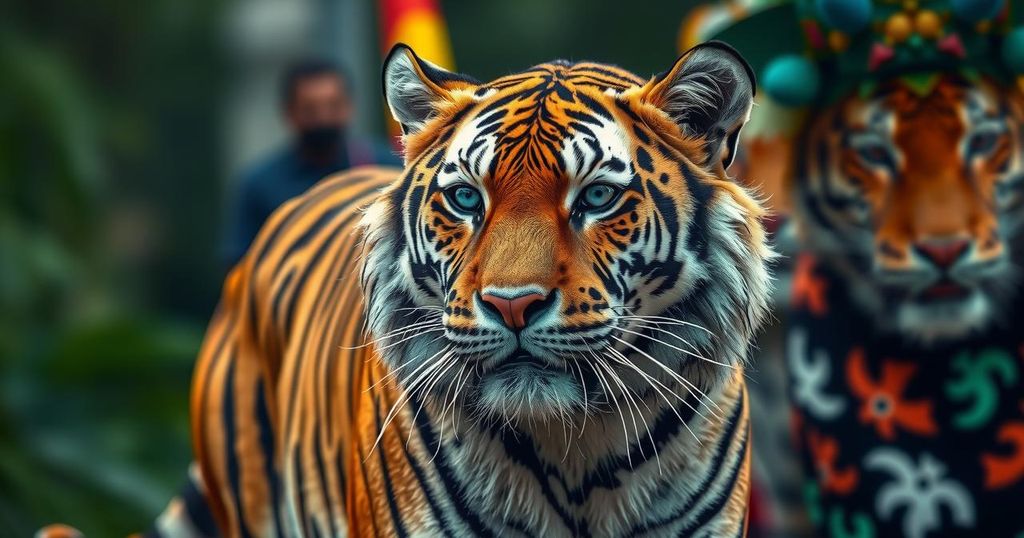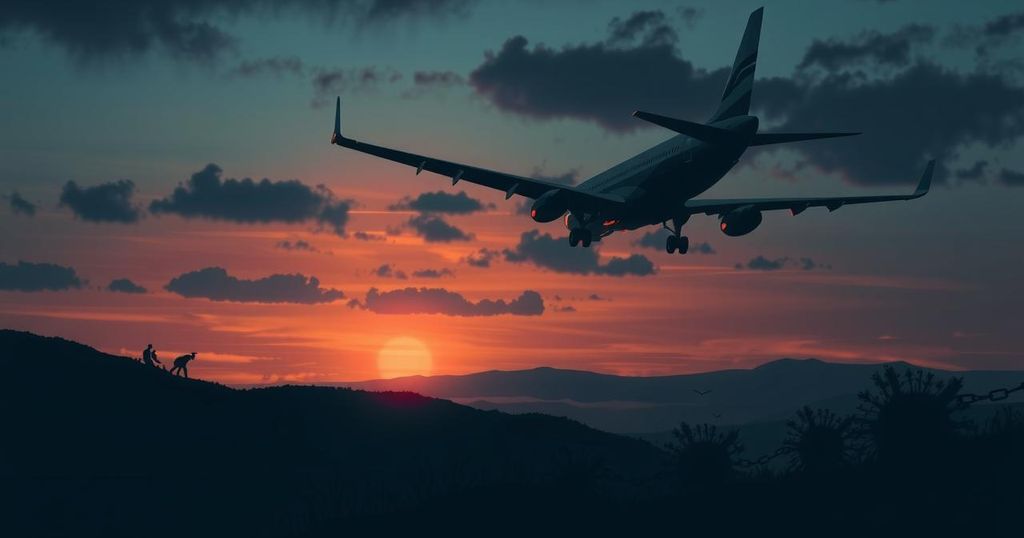Russian Tigr Observed at Equatorial Guinea’s Military Parade
A Russian GAZ Tigr vehicle was spotted during Equatorial Guinea’s military parade on October 12, indicating the possible deployment of Russian troops in the country. Photographs revealed the vehicle’s distinct Russian camouflage and military features, while the parade showcased mainly Chinese armored vehicles. Reports suggest that Russian mercenaries have also arrived to provide protection for the president and his family.
On October 12, during the military parade in Djibloho celebrating the 56th anniversary of Equatorial Guinea’s independence, a Russian GAZ Tigr tactical vehicle was prominently displayed. This incident suggests a continued Russian military presence in the West African nation, reinforcing earlier reports of Russian troop deployments. The Tigr, characterized by its distinct camouflage pattern used by the Russian armed forces, was spotted amidst the festivities as the wife of President Teodoro Obiang arrived. Notably, the vehicle was equipped with smoke grenade launchers, indicative of the SpN variant utilized by Russian special forces. Additionally, the soldier observed in the Tigr’s roof hatch donned a uniform inconsistent with that of local military attire. In the military parade itself, the only Russian-made vehicles on display were four aged BMP-1 infantry fighting vehicles, overshadowed by a plethora of modern Chinese armored vehicles utilized by the Rapid Intervention Battalion (BIR). Reports from the Spain-based opposition newspaper, Diario Rombe, indicated the arrival of Russian mercenaries in Malabo, allegedly tasked with safeguarding the President and his family. Further photographs published on September 14 revealed a gathering of European soldiers—one bearing a Russian flag patch—alongside their African counterparts in Bata, the principal city of continental Equatorial Guinea.
The presence of Russian personnel in Equatorial Guinea has garnered attention recently due to its implications for regional security and international dynamics. Reports from various sources suggest that Moscow is increasing its military influence in Africa, particularly through the deployment of mercenaries and military advisors. This trend is consistent with other instances across the continent where Russia has engaged in military collaborations, often under the guise of private security contractors. The situation in Equatorial Guinea appears to be part of a broader strategy for Russia to solidify its geopolitical positioning through direct military involvement and support for local governance.
The emergence of the GAZ Tigr during Equatorial Guinea’s military parade serves as a potent symbol of Russian influence within the country, concomitant with recent reports of Russian military personnel on the ground. These developments may carry significant implications for the security architecture of the region, prompting further scrutiny from local authorities and international observers alike. The juxtaposition of Russian and Chinese military assets in Equatorial Guinea underscores a complex interplay of global powers seeking to expand their influence in Africa.
Original Source: www.janes.com




Post Comment